
Who is the best robotic surgeon for hip pain treatment in Gurugram at Ortho Plus?
Hip pain can severely affect mobility, independence, and overall quality of life. At Ortho Plus, we understand that patients seek
Home » Blog

Hip pain can severely affect mobility, independence, and overall quality of life. At Ortho Plus, we understand that patients seek

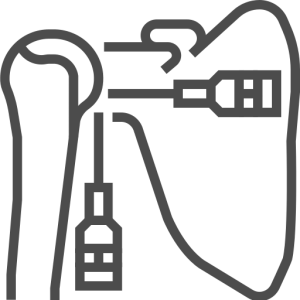
Arthroscopy is a minimally invasive surgical technique used to diagnose and treat various joint problems using a small camera (arthroscope) and specialized instruments. It allows the surgeon to view the inside of the knee or shoulder joint through tiny incisions, resulting in less pain, faster recovery, and minimal scarring compared to open surgery.
Smaller incisions, minimal scarring
Faster healing and shorter hospital stay
Lower risk of infection
Early return to work, sports, and routine activities

Joint Replacement, also known as arthroplasty, is a surgical procedure where a damaged or worn-out joint is replaced with an artificial implant to restore mobility, relieve pain, and improve quality of life. It is commonly performed for the knee, hip, shoulder, and elbow joints when non-surgical treatments fail to provide relief.
Severe joint pain affecting daily activities
Advanced osteoarthritis or rheumatoid arthritis
Persistent stiffness and swelling
Joint damage caused by injuries or fractures
Poor mobility and reduced quality of life despite medications, physiotherapy, or injections

Hip Replacement, also known as hip arthroplasty, is a surgical procedure where the damaged or worn-out parts of the hip joint are replaced with artificial implants. It is recommended for patients suffering from severe hip pain, stiffness, and restricted mobility caused by conditions like osteoarthritis, rheumatoid arthritis, fractures, or degenerative joint diseases.
Persistent hip pain affecting daily activities
Limited mobility and difficulty walking or standing
Joint stiffness unresponsive to medications or physiotherapy
Hip fractures or severe joint damage
Poor quality of life due to chronic discomfort

Meniscus Repair is a minimally invasive surgical procedure to fix a torn meniscus — the C-shaped cartilage in the knee that cushions and stabilizes the joint. Meniscus tears often occur due to sports injuries, sudden twisting movements, or age-related degeneration, leading to pain, swelling, and restricted knee movement.
Persistent knee pain and swelling
Locking or catching sensation in the knee
Restricted mobility and instability
Tears caused by sports injuries or accidents
To prevent long-term complications like arthritis

Posterior Cruciate Ligament (PCL) Reconstruction is a surgical procedure performed to repair or replace a torn PCL — one of the key ligaments that stabilize the knee joint. PCL injuries usually occur due to road accidents, sports injuries, or direct impact to the knee and can cause instability, pain, and difficulty in movement.
Complete or severe PCL tear
Knee instability, especially when walking downhill or climbing stairs
Persistent pain and swelling unresponsive to physiotherapy
Multiple ligament injuries in the knee
For athletes or active individuals aiming to regain full knee function

Anterior Cruciate Ligament (ACL) Reconstruction is a surgical procedure to repair or replace a torn ACL — one of the major ligaments that stabilize the knee. It’s commonly required after sports injuries, accidents, or sudden twisting movements that cause knee instability.
Complete or partial ACL tear
Knee instability during walking, running, or climbing stairs
Frequent knee buckling or giving way
Persistent pain and swelling despite physiotherapy
For athletes aiming to return to high-demand sports

Knee Replacement, also known as knee arthroplasty, is a surgical procedure performed to replace damaged or worn-out knee joint surfaces with artificial implants. It is recommended for patients with severe knee pain, stiffness, and mobility issues caused by osteoarthritis, rheumatoid arthritis, injuries, or degenerative joint diseases.
Persistent knee pain affecting daily activities
Stiffness and swelling unresponsive to medications or physiotherapy
Severe joint damage due to arthritis or trauma
Reduced mobility and quality of life

Robotic Joint Replacement is an advanced surgical technique that uses cutting-edge robotic technology to perform highly precise joint replacement procedures, most commonly for the knee, hip, and shoulder. It enhances accuracy, minimizes tissue damage, and improves overall recovery outcomes compared to traditional methods.
High Precision: Robotic systems create a 3D model of the joint, enabling accurate bone cutting and implant placement.
Personalized Surgery: Treatment plans are customized based on each patient’s anatomy.
Minimally Invasive: Smaller incisions mean less blood loss, reduced pain, and faster recovery.
Improved Implant Longevity: Accurate alignment reduces wear and tear, extending implant life.
Faster Rehabilitation: Patients regain mobility and return to normal activities sooner.

Fracture treatment involves diagnosing, aligning, stabilizing, and supporting broken bones to ensure proper healing and restore normal function. The approach depends on the type, location, and severity of the fracture.
Simple (Closed) Fracture: Bone breaks but skin remains intact.
Compound (Open) Fracture: Bone pierces through the skin, increasing infection risk.
Greenstick Fracture: Incomplete break, common in children.
Comminuted Fracture: Bone shatters into multiple pieces.
Stress Fracture: Small cracks due to repetitive stress.
Pathological Fracture: Caused by underlying conditions like osteoporosis or cancer.
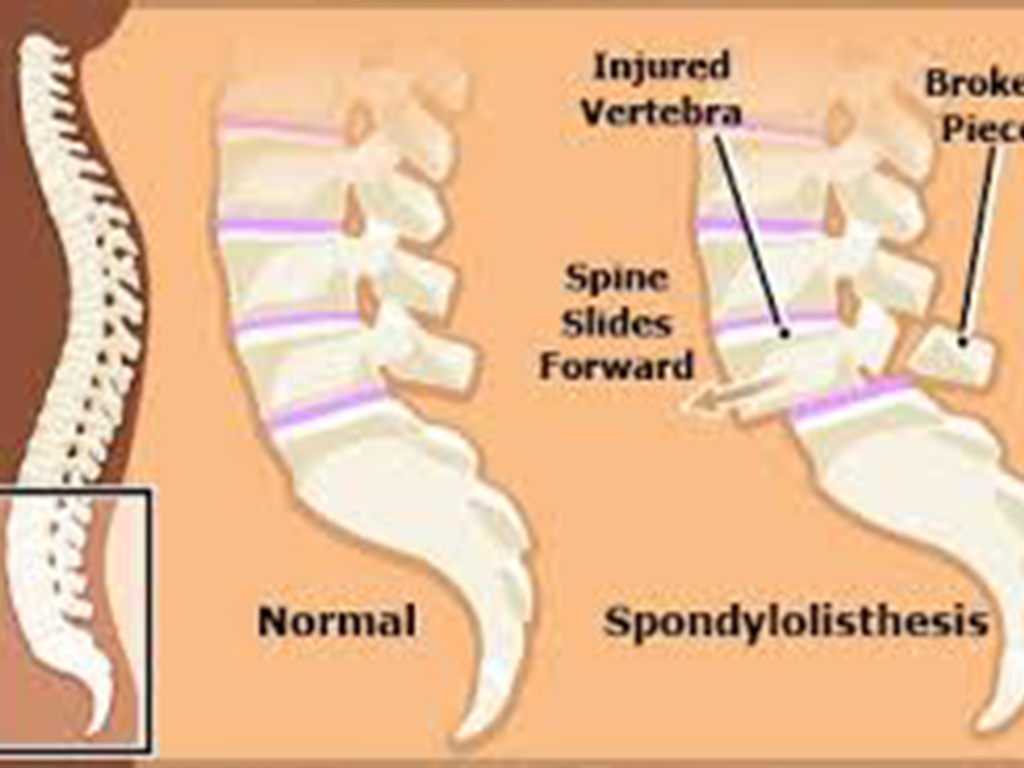
Lumbar Spondylolisthesis is a spinal condition where one of the vertebrae in the lower back (lumbar spine) slips forward over the vertebra beneath it. This misalignment can cause lower back pain, stiffness, nerve compression, and sometimes leg pain or weakness.
It commonly affects the L4-L5 and L5-S1 levels and can range from mild to severe based on the degree of slippage
Age-related degeneration of discs and joints
Repetitive stress from sports or heavy lifting
Spinal trauma or fractures
Congenital defects
Spinal tumors or infections
Post-surgical instability
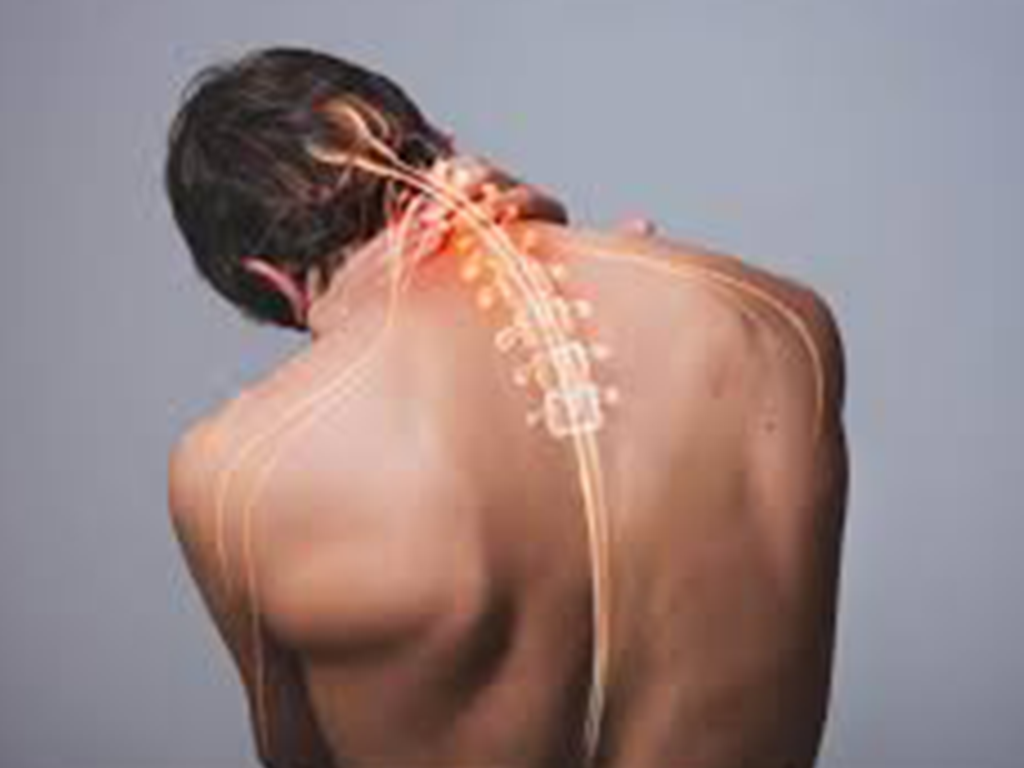
Cervical Radiculopathy — commonly referred to as a pinched nerve in the neck — is a condition where a nerve root in the cervical spine (neck region) becomes compressed or irritated. This can cause pain, numbness, tingling, and weakness that radiates from the neck into the shoulders, arms, and hands.
It usually occurs due to degenerative changes, disc herniation, or trauma and is more common in people aged 30 to 60 years.
Cervical radiculopathy develops when the nerve roots exiting the spinal cord become compressed or inflamed. Common causes include:
Cervical Disc Herniation: Displaced disc material presses on nerve roots.
Degenerative Disc Disease: Age-related wear and tear causes narrowing.
Cervical Spondylosis (Arthritis): Bone spurs can compress nerves.
Spinal Stenosis: Narrowing of the spinal canal.
Trauma or Injury: Sudden impact damaging discs or vertebrae.
Repetitive Strain: Poor posture, heavy lifting, or prolonged screen time.
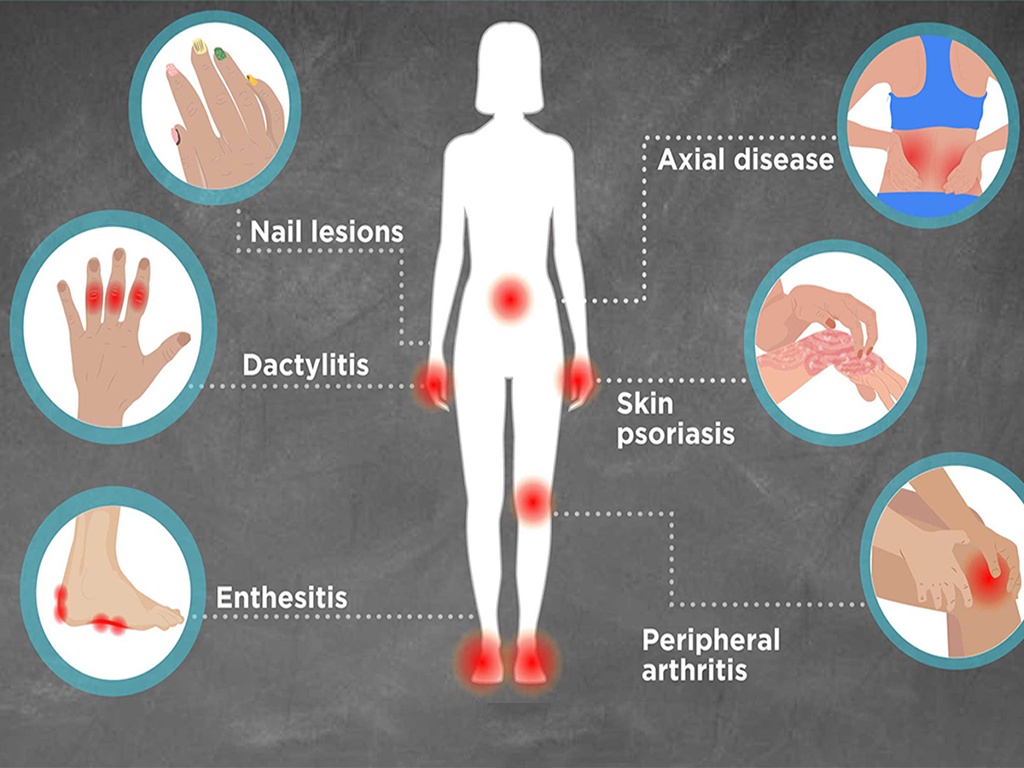
Arthritis is a general term used to describe a group of conditions that cause inflammation, pain, stiffness, and reduced mobility in one or more joints. It affects people of all age groups and can range from mild discomfort to severe disability if not managed properly.
There are over 100 types of arthritis, but the most common are Osteoarthritis (OA) and Rheumatoid Arthritis (RA).
Persistent joint pain and tenderness
Swelling around affected joints
Stiffness, especially in the morning or after inactivity
Redness and warmth over the joint
Difficulty performing daily activities
In severe cases, joint deformity
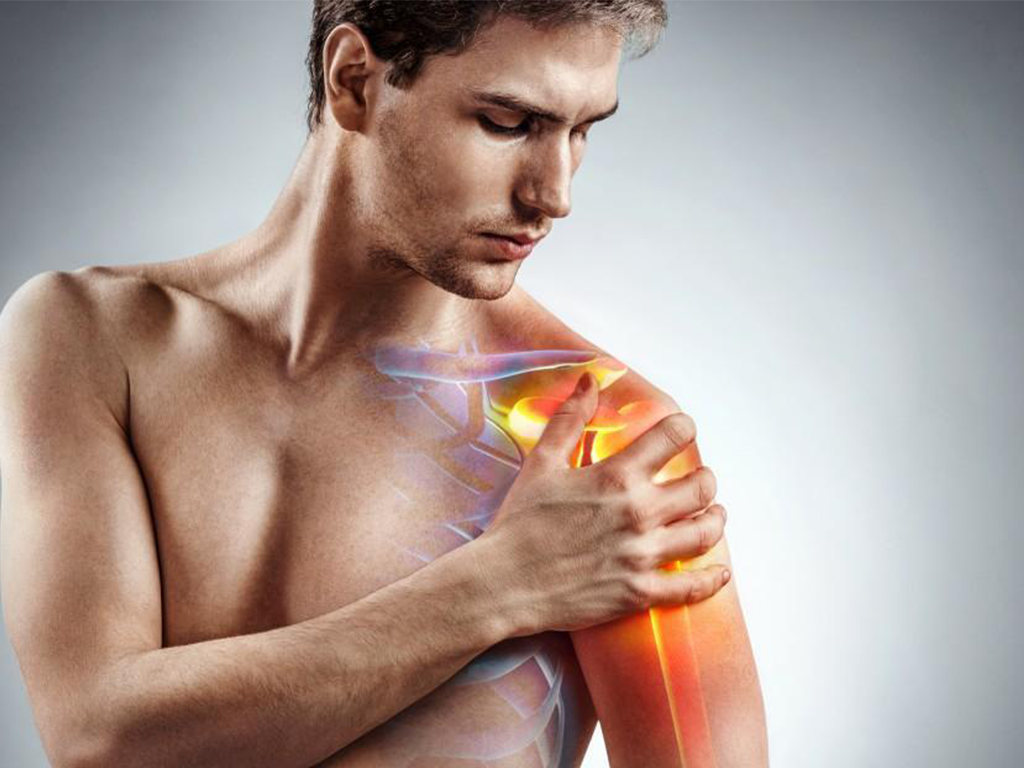
Rotator Cuff Injury Rehabilitation is a structured recovery program designed to restore shoulder strength, flexibility, and function after a rotator cuff injury. It can be used both post-surgery and for non-surgical management of partial tears, tendonitis, or impingement. A well-planned rehab protocol helps reduce pain, regain mobility, and prevent re-injury.
Reduce pain and inflammation
Restore shoulder mobility and flexibility
Strengthen rotator cuff and surrounding muscles
Improve shoulder stability and prevent stiffness
Enable return to sports, work, and daily activities
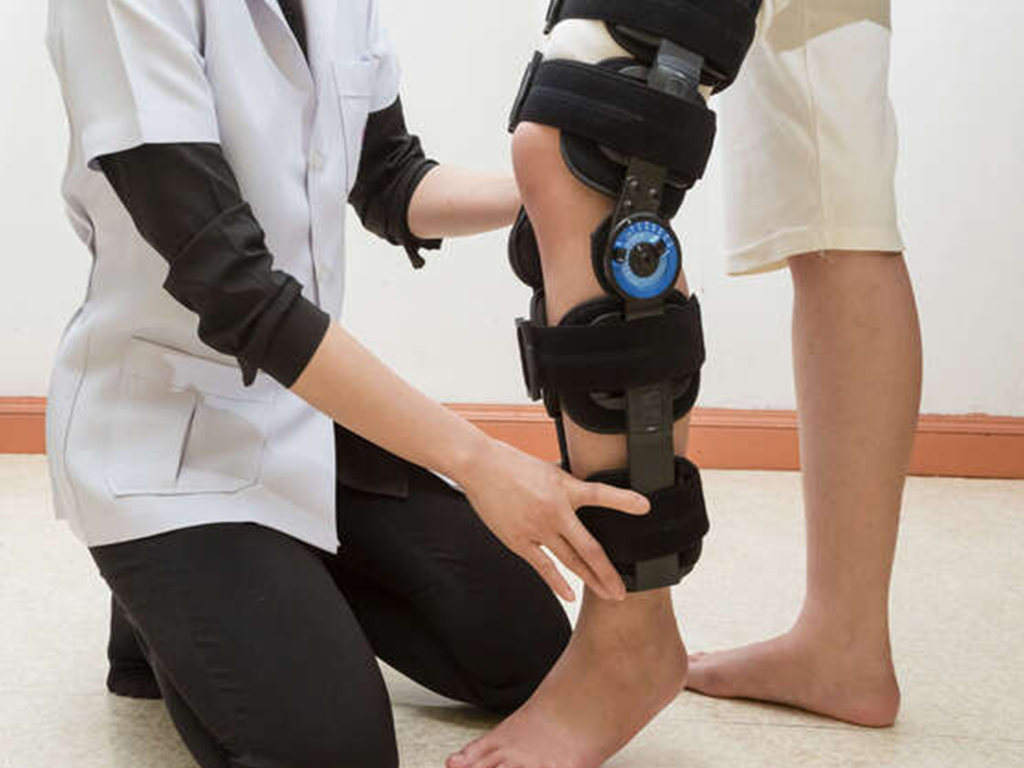
Total Knee Replacement Rehabilitation (TKR Rehab) is a structured recovery program designed to help patients regain mobility, strength, and function after undergoing Total Knee Replacement surgery. A well-planned rehab program is critical for a successful outcome, helping patients return to daily activities faster, minimize stiffness, reduce pain, and improve the longevity of the knee implant.
Control Pain & Swelling after surgery
Restore Knee Mobility and flexibility
Rebuild Strength in thigh, hip, and calf muscles
Improve Balance & Walking Patterns
Enhance Quality of Life by enabling independent movement
Prevent Complications such as stiffness, clot formation, and implant loosening
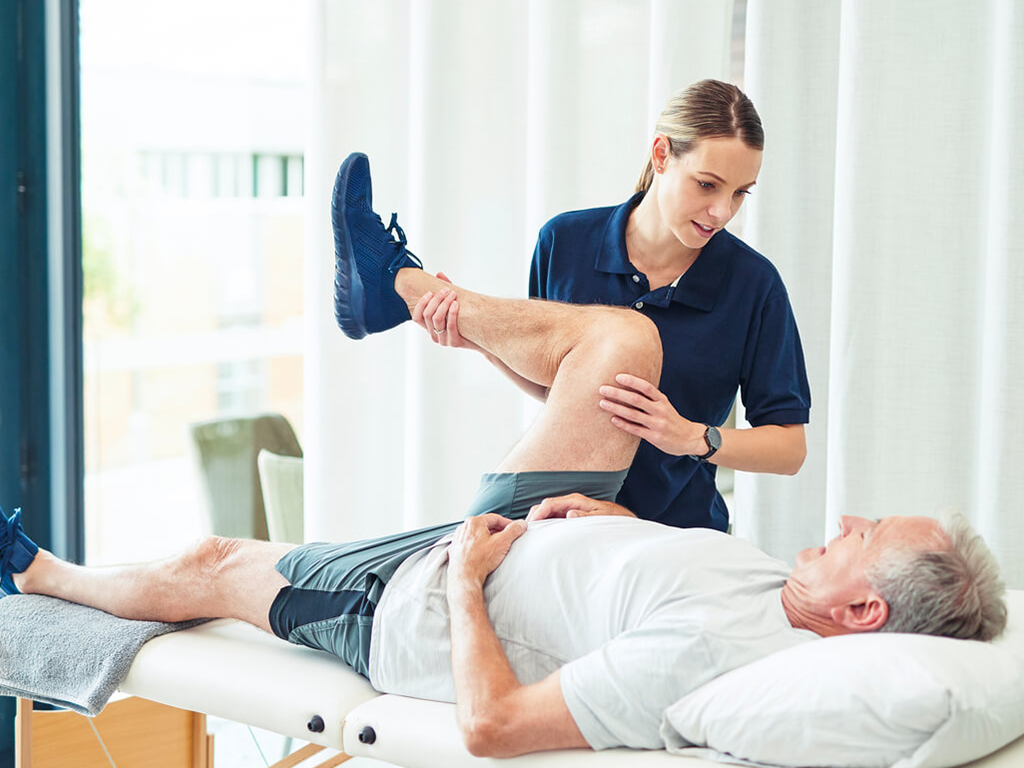
Post-Surgical Rehabilitation (Post-Surgical Rehab) is a structured recovery program designed to restore mobility, strength, and function after surgery. It plays a vital role in ensuring optimal healing, reducing pain, preventing complications, and helping patients return to daily activities and sports faster. Whether you’ve undergone orthopedic surgery, joint replacement, spine surgery, or trauma repair, a personalized rehabilitation plan is essential for a successful recovery.
Accelerate Healing – Stimulates circulation and tissue repair
Reduce Pain & Swelling – Through targeted therapy and exercises
Restore Mobility – Regain flexibility and range of motion
Rebuild Strength – Improve muscle support around the surgical site
Prevent Complications – Reduce risks of stiffness, scar tissue, and re-injury
Enhance Overall Function – Help patients return to daily activities quickly and safely